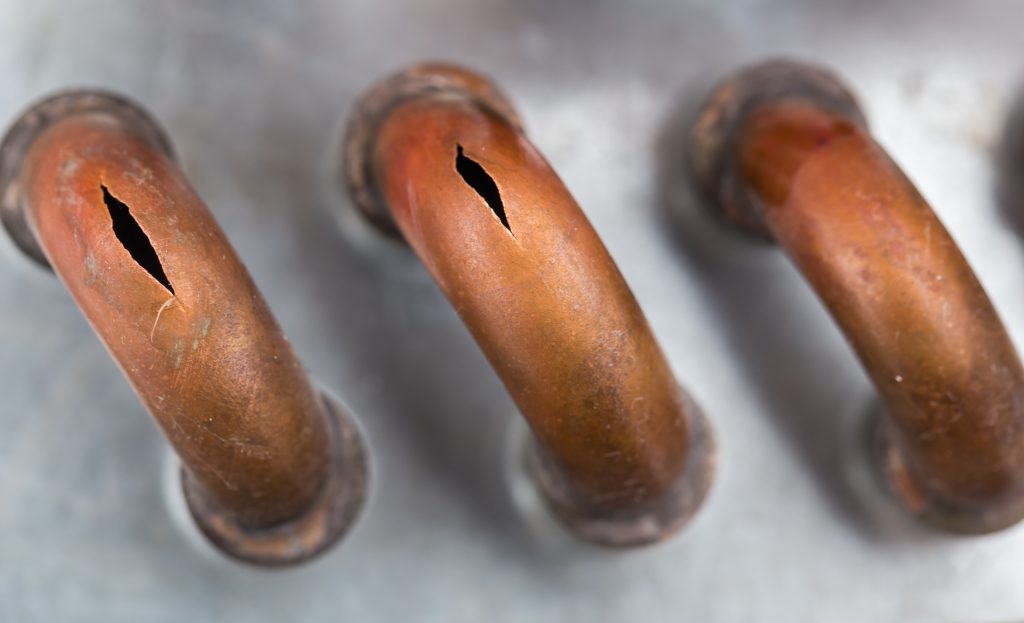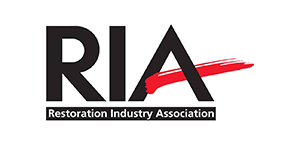When winter comes there are a lot of things to look forward to snow days, hot cocoa near the fireplace and the wearing of warm socks under homey comforters. Enjoying all these would be great until you find out that your water isn’t running. This means that you may have frozen pipes in the house.
Pipe freezing is a common occurrence during cold weathers. It’s best to ensure it doesn’t happen at all. Below you’ll find tips from True Restoration Experts as to the prevention on frozen pipes and the immediate action you should take when it does happen.
Do you have a home or dwelling that has a chronic condition of pipes freezing every winter? In this blog I will touch on the following aspects of frozen pipes:
• How to minimize the chance of pipes freezing by preventative pipe installation techniques & some of the likely causes for frozen pipes and locations of the freeze points
• How to safely unfreeze a pipe
• What will happen if you don’t do anything and wait for the pipe to thaw naturally
How to minimize the chance of pipes freezing by preventative installation techniques:
If you are having an addition done on your existing home or building a new structure, you would hope that your contractor or builder would take precautions and adhere to guidelines that would prevent pipes from freezing but unfortunately, the rules & regulations are not that stringent. As a restoration company of long island, we have noticed some poor quality installation techniques used in every type of structure.
Domestic water pipes & heating pipes are often times run in an unheated crawl as a necessity for the installation of the fixture. There usually are several options for running these pipes. The easier & faster option is to run the pipe below the beams so that time & energy is not wasted in drilling each beam and snaking the pipe through the beams. The slower option is obvious to do all that drilling. In either instance, the pipe should have some kind of pipe insulation over the pipe. Believe it or not, we often find pipes uninsulated and even the floor systems in crawl spaces uninsulated. Running the pipe in between the beams and having the beam cavities filled with fiberglass insulation as well as having the pipe insulated with a rigid insulation installed tightly will protect the pipes from freezing in a crawl space.
Another safe practice for pipe installation is to “never”, as in never ever, run a pipe in an exterior wall, a soffit or an overhang. I laugh at myself because as great as this sounds I have broken this cardinal sin of contracting as sometimes there is just no other way to run the pipe to its needed location. There are some precautions that you can take to lessen the chances of pipes freezing if this is an absolute must. One option would be to fur the wall out (make it thicker) so that more insulation can be installed between the pipe & the outside. A second option would be to add a heat tracer (a thermostatically controlled hard-wired heating element) to the pipe.
Wind infiltration into, above or below heated spaces will be the likely location of a pipe freeze. The tiniest crack or space can let wind in and often times pressurize the air flow through this tighter space. A thermodynamic quality of gas (air) as it changes from higher pressures to lower pressures the gas experiences a cooling effect, this is how an A/C condenser produces cold air for your air conditioner. The A/C condenser condenses the gas (pressurizes it), when the gas is unpressurized at the blower coil, the coil (metal) gets super cold and the fans blow air past the coil to extract the coldness. If you have ever let air pressurized air out of an O2 cylinder or scuba tank rapidly you would notice the freezing effect that it creates on the metal valves. This effect is part of what is causing the pipes of your dwelling to freeze at these wind infiltration points. Super cold conditions without wind can obviously cause pipes to freeze without wind conditions.
Additional pipe installation techniques that would help minimize pipe freezing’s that I won’t expand too much in order to keep this post reasonably short would be:
• The running of pipes through beams (above heated spaces below) & then projecting pipes out into cantilevers minimizing the amount of piping in soffit areas.
• The running of water mains up from below grade into a heated space with no fittings or valves in unheated areas. The valves or fittings become choke points for the water & provide greater metal surface areas to create a higher likelihood of freezing.
• Not using Pex fitting (especially elbow fittings) in unheated spaces. Pex piping is plastic piping & the fittings are metal. The metal acts as a heat sink and amplifies the freezing process at these water choke points. Pex, being plastic, is flexible and can be gradually bent and run in such a manner as to enable it to be installed without fitting to make a 90 degrees turn (elbows).
• The running of pipes to a vanity on an outside wall that comes up from the floor into the bottom of the vanity rather than into the exterior wall would be another recommended practice.
How to safely unfreeze a pipe:
OK, I know you want to grab the portable propane torch and fire up that frozen pipe in your crawl space. This is the most dangerous practice to solve this problem because an open flame in a tight space, coming in contact with wood, insulation paper, plastic piping & plastic wire coatings is a recipe for a disaster. Pipes and wires run through small holes in the framing and in vertical voids of the structure. The torch user can inadvertently send super-hot gases into these voids (condensing the gases which create a greater heating effect on the gases, remember our thermodynamics from above). Unbeknownst to the torch user, a fire is started in this void out of their view and will race up vertically in the void.
The prudent pipe unfreezer person resists the temptation to use the torch & confidently grabs an electric heat gun or hair blow dryer and patiently unfreezes the pipe. Be careful with these electric heat guns as they throw off substantial heat and if held close enough to wood framing members or other flammables can start a fire just like a torch. Keep a safe distance when operating these tools and refer to the operating manual for safe distance recommendations.
Another safe method is to create a sealed cavity or space around the frozen pipe and add a low-level heat source to this cavity for gradual thawing of the pipe. For example, if you had a crawl space that had a frozen pipe & you could somehow create a cavity around the pipe with no wind infiltration (somewhat sealed), you could do something as simple as adding a relatively safe heat source (a lamp or drop light) to this cavity which would eventually heat up this small environment enough to safely & slowly thaw the pipe.
The other safe practice is to wrap the frozen pipe with an electric heat tracer. The heat tracer will gradually thaw the pipe. The heat tracer would often times need to be fed by an extension cord from a more remote power source (outlet)
What will happen if you just wait for the pipe to thaw naturally?
Hmmm, that’s the gambling man (or woman) approach. I like your moxie & I can appreciate gambling as an activity as it’s very exhilarating when you win, but when you lose…not so good, right? One thing to consider and understand is what occurs during the freezing & thawing process.

Suggestions on how to handle a frozen pipe:
The 1st logical option would be to call a plumber, right? Well, it’s not wrong but it also might not be the best solution. Often times sheetrock or other interior finishes need to be removed and eventually replaced, does a typical homeowner possess the skillset, the tools, the time or the will to do these repairs? A better call would be to a contractor. Contractors have a wider range of skills and can handle most pipe thawing, pipe repair, interior or exterior finish and most importantly can provide a preventative measure to minimize future pipe freezes. The best call to make would be to a full-service restoration contractor. A full-service restoration contractor is like a general contractor on steroids. They have all the capabilities of a general contractor plus the water extraction & dry down equipment to deal with water leaks resulting from a frozen or broken pipe. They also have the knowledge & experience in dealing with insurance claims and can help a homeowner process a claim, if needed. True Restorations promotes its services as “one call does it all” and with a frozen pipe and all the nuances of thawing, repairing and dealing with potential consequences as described above, we are the logical 1st call & only call needed to be made.
Kevin Bevilacqua
President True Restorations, Inc.
























